 |
Miss GayaneThe next program in the series “In the Pavilion: Around Literature and Art” is dedicated to a unique mystery in the history of Armenian theater: a 19th-century theater actress who was famous as Miss Gayane. After gaining great fame, it is rumored that she is actually not a woman, but a man. She played for only one year, appeared on stage in only four roles, and left the theater. The program tries to answer the question: was that brilliant actress actually a woman and the victim of a conspiracy, or was she really a man? |
 |
Feast of the Evangelists in the Diocese of AragatsotnOn October 18, our church celebrated the feast of the Four Evangelists. All the priests of the Aragatsotn diocese, along with the faithful of their communities, were in the St. Mariane Church in Ashtarak. The Holy Liturgy was celebrated without the diocesan Primate, Bishop Mkrtich Proshyan. The Holy Father was detained for 2 months, and the diocesan secretary, Father Garegin Arsenyan, was also detained.
|
 |
Voice and speech in spiritual songs, part 1Armenian medieval spiritual music - hymns, spiritual songs, created as components of ritual, are unique prayers, where words and melody, ritual and artistic, authorial and universal are combined. How did our hymn writers achieve such a striking harmony? Literary critics Hayk Hambardzumyan, Arkmenik Nikoghosyan, and musicologist Arusyak Tamrazyan discuss these issues in the program "Parallel Readings". |
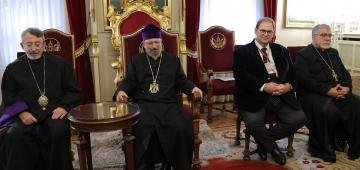 |
Translators' Day at the Armenian Patriarchate of ConstantinopleThis year, the week of the Feast of the Holy Translators was also marked by celebrations of the fifth anniversary of the enthronement of Patriarch Sahak Mashalyan at the Armenian Patriarchate of Constantinople. Among the festivities was the presentation of the documentary film “Path of Identity” about the history of the Armenian Patriarchate of Constantinople. |
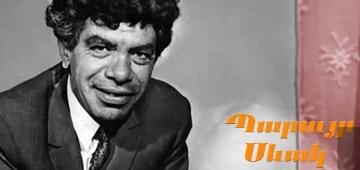 |
Paruyr SevakAlmost half a century has passed since Paruyr Sevak's tragic car accident. To this day, suspicions have not disappeared that the car accident was an attempt to kill the writer. Novelist Hovhannes Yeranyan tries to answer the question: was the car accident an accident or a premeditated murder? |
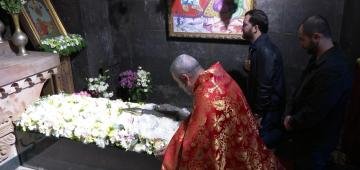 |
The Armenian Apostolic Church celebrated the commemoration day of the Holy ApostleWith the blessing of the Patriarch of All Armenians, the relic-bearing the Right Hand of the Apostle St. Ananias was transferred from the Mother See of Holy Etchmiadzin to the Zoravor Holy Mother of God Church. Led by Father Vahan, the procession greeted the relic on Parpetsi Street, then with the singing of hymns, the relic-bearing right was lowered to the chapel of St. Ananias. A blessing ceremony was held at the Zoravor Holy Mother of God Church. |
 |
The "Sun-Children" center has moved to a larger and more spacious buildingThe website zarkerak.am published an article on October 13, accusing the church of taking back the space allocated for children with Down syndrome. Moreover, the author of the unsigned article did not consider it necessary to verify what he knew from the center’s administration, presenting incomplete, false and defamatory information. The president of the “Sun-Children” Children’s Health and Development Center NGO, Father Grigor Grigoryan, assures all the so-called “heartfelt” media outlets that the center has not only not been closed, but also continues its work with greater opportunities. |
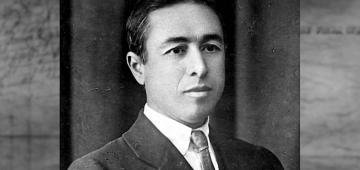 |
Ler KamsarThe next program in the series "In the Pavilion: Around Literature and Art" is dedicated to the famous satirist Ler Kamsar. Prose writer Hovhannes Yeranyan tries to answer the question of why his works and literary identity do not gain wide recognition among reading circles. |
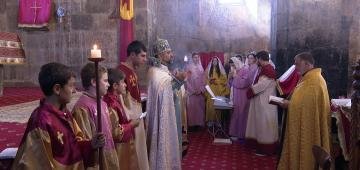 |
The relic of the cross of Christ has been moved to the St. George Church in KoshWith the blessing of the Patriarch of All Armenians and the initiative of the Primate of the Aragatsotn Diocese, this is the second year that a relic has been transferred to the St. Gevorg Church. Last year, pilgrims also communed with the relic of the commander St. Gevorg. Those present at the liturgy - the godfather of the cross, benefactors, and pilgrims - communed with the relic. |
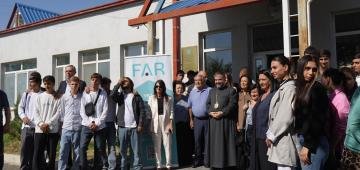 |
The Catholicos of All Armenians received the members of the Board of Directors of the ARF and benefactorsMembers of the Board of Directors and benefactors of the Armenian Relief Fund of the Armenian Eastern Diocese of the Armenian Apostolic Holy Church of the United States, the Primate of the Diocese, President of the Armenian Relief Fund, His Grace Bishop Mesrop Parsamian, and the Chairman of the Board of Directors of the Fund, Randy Sapah-Gulyan, visited institutions where the Armenian Relief Fund Armenia Office is implementing programs. During this visit, the Board discussed multi-component programs aimed at overcoming poverty in Tavush and Syunik, initiatives implemented in the areas of child protection, education and science, high technologies, economic and community development, healthcare, social assistance, and work with families forcibly displaced from Artsakh. |
 |
The charm of the Hamastegh's proseHamastegh's literature is one of those exceptional works that was warmly received both in the Diaspora and in Soviet Armenia. And the reason for this was absolutely not that Hamastegh's prose did not have any ideological accents that were unacceptable or not native to either side. The secret lies in the depth of his literature, high artistry, and most importantly, a unique, sometimes inexplicable charm. Literary critics Hayk Hambardzumyan and Arkmenik Nikoghosyan talk about the writer's prose in the "Parallel Readings" program. |
 |
Nagorno-Karabakh: Cultural rights violations and forced displacementsThe work “Nagorno-Karabakh: Violations of Cultural Rights in the Context of Forced Displacement” has been published. The book is dedicated to the study of the multifaceted violations of the cultural rights of Artsakh Armenians forcibly displaced from their historical homeland as a result of the wars, ethnic cleansing, genocidal acts, racial hatred, discrimination, and systematic destruction of cultural heritage unleashed by Azerbaijan in 2020-2023, and the presentation of mechanisms for their protection. Anna Sargsyan spoke with the author of the monograph, Candidate of Historical Sciences Armine Tigranyan. |
